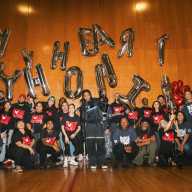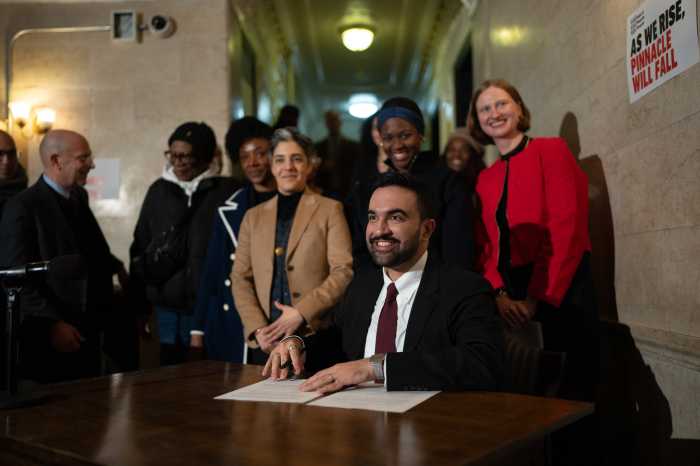More than 50 Hispanic day laborers lined up outside of the 65th Street M and R train station to try to get a free lunch that for many would be the only meal of the day.
They passed a sign-in sheet back and grabbed a meal provided by the Salvation Army made up of mashed potatoes, saucy chicken breast, bread and a cup of Kool-aid. A shy newcomer approached one of the workers asking what he had to do to get the free food. Jose Perez, assistant coordinator of the Emergency Disaster Services Outreach program in the Salvation Army Astoria Corps, told him all he has to do was put his name on the sign-in sheet.
“Thank you,” said the young man with a ponytail carrying a backpack. “My friends are standing over there and they just deal with the hunger.”
Ken Sanoguet, coordinator of the program that feeds more than 300 people daily, said they go out twice a day during weekdays to serve breakfast and lunch to these day laborers, who are mostly Hispanic men and homeless. They are among the one in four U.S. Hispanics who live below the poverty line, according to new Census data.
“It is very sad,” Sanoguet said. “It is heart breaking.”
Numbers show Hispanic and Blacks have suffered the most from this economic recession. Among Hispanics, the proportion of poor people nationally rose from 23.2 percent to 25.3 percent in 2009. While 25.8 percent of Blacks are living in poverty, compared to 9.4 percent of non-Hispanic whites who live below the poverty line.
Jean Chappell, 67, goes every Wednesday to the food pantry run by the Salvation Army Astoria Corps, so she can feed her family.
“It’s rough,” said Chappell, who is disabled and lives in the Woodside Houses. “As Black folks, we know how to stretch a dollar.”
Chappell has three family members who are among the one out of five Blacks and Hispanics who are unemployed or underemployed, compared to one out of every six or 8.3 percent of all New Yorkers.
“It is usually what happens,” said James Parrott, chief economist of the Fiscal Policy Institute, a nonpartisan think tank. “Hispanics and Blacks get hit worst overall.”
The U.S. Department of Labor reported that New York City’s unemployment rate rose to 9.4 percent in August 2010. Still, Queens is better off than the rest of the boroughs with an unemployment rate of just 8.5 percent. The Bronx topped the list with 13 percent, followed by Brooklyn with 10.5 percent, Staten Island with 9.3 percent and Manhattan with 7.8 percent, according to the New York State Department of Labor.
The city is trying to help unemployed New Yorkers find jobs through its nine Workforce1 Career Centers including three in Queens that are run by the New York City Department of Small Business Services. So far this year, the Workforce1 Career Center located in Queens provided services to 28,832 jobseekers of which 16,581 were new to the system. The center placed jobseekers in 4,743 jobs compared to 5,656 all of last year.
“The center is a good place for anyone from any educational level to find a job,” said Paula Bailey, director of the Workforce1 Queens Career Center. “We will help to place you.”
Parrott said New York has a long way to go to make up for all the jobs lost during the last two years. Parrott called on elected officials at all levels to intensify efforts to promote immediate job creation and to address budget problems by adjusting tax revenue.
“This recession is just as bad for New York City as it is for the rest of the country,” Parrott said. “As a country we just have to do better than that.”
































